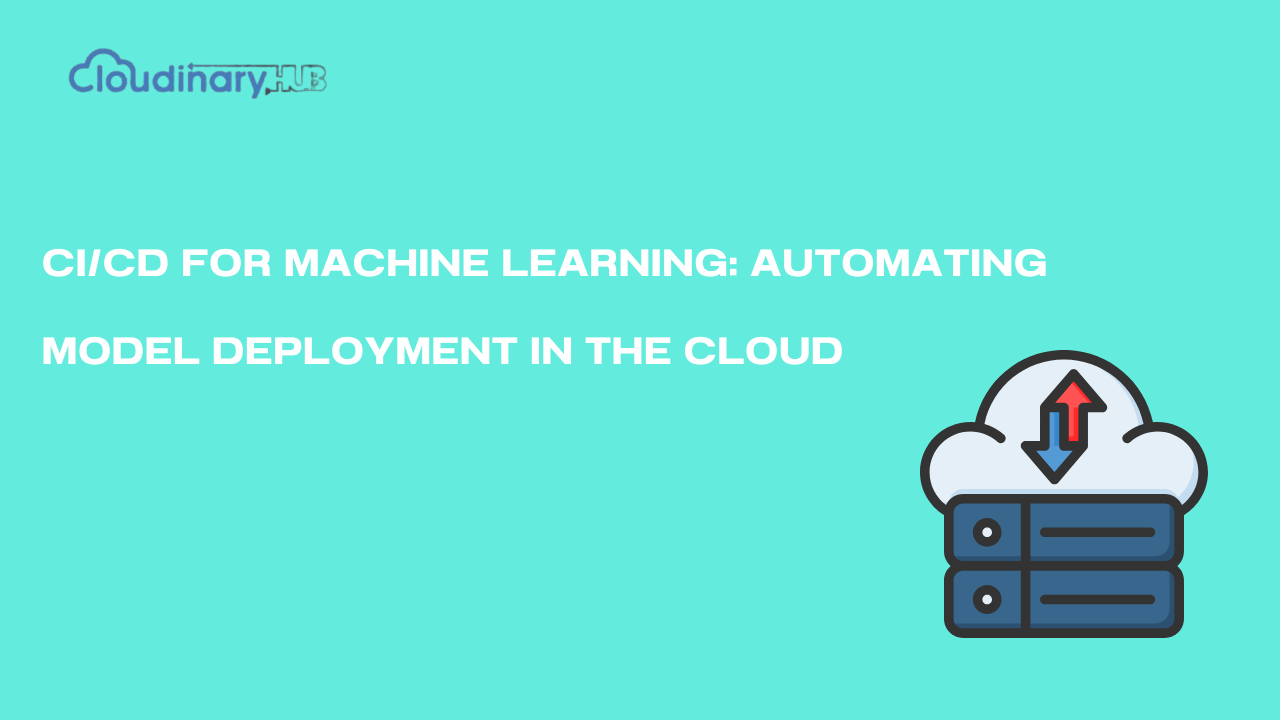You’ve spent weeks training a high-performing ML model. It’s ready to go, but deployment takes forever. The data team is waiting for validation, DevOps is swamped with requests, and business stakeholders are losing patience. When the model finally goes live, it’s already outdated because data patterns have shifted. Sound familiar?
If so, you’re not alone. In 2025, AI adoption is at an all-time high, but many companies still struggle with deploying and maintaining ML models efficiently. That’s where CI/CD for ML (MLOps) comes in. This guide will walk you through automating your ML deployment using cloud-native tools, making the process smoother, faster, and stress-free.
Why Traditional ML Deployment Fails
Deploying ML models is not like deploying regular software. Why? Because ML models rely on constantly evolving data, and that changes everything. Here are some common roadblocks teams face:
| Challenges | Why It’s a Problem |
|---|---|
| Data Drift | The model’s performance drops as new data patterns emerge. |
| Model Decay | Even the best models degrade over time and need retraining. |
| Manual Pipelines | Slow, error-prone, and dependent on too many people. |
| Lack of Version Control | Hard to track changes in datasets and models. |
| Compliance Issues | ML workflows must follow industry regulations and audit trails. |
CI/CD pipelines solve these issues by automating the entire workflow, from training to deployment, ensuring that models stay accurate, reliable, and compliant.
Step-by-Step Guide to Implementing CI/CD for ML
Step 1: Set Up Version Control & Experiment Tracking
Before automating deployment, you need to organize your ML code and data. This means version control, tracking experiments, and ensuring reproducibility.
Use Git for code versioning – Store all your scripts, notebooks, and configs in GitHub, GitLab, or Bitbucket.
Track datasets and model versions – Tools like DVC (Data Version Control) and MLflow help you version datasets and experiment runs.
Define infrastructure as code – Tools like Terraform automate cloud resource management, ensuring consistency.
Step 2: Automate Model Training with CI Pipelines
Every time new data arrives or code changes, you don’t want to manually retrain the model. Instead, CI (Continuous Integration) pipelines automate this process.
How It Works:
- A developer commits a change to the ML code repository.
- The CI pipeline (using GitHub Actions, GitLab CI/CD, or Jenkins) triggers model training.
- Unit tests run to check if the data pipeline and preprocessing scripts work correctly.
- If all checks pass, the model training job executes on a cloud platform like Google Vertex AI, AWS SageMaker, or Azure ML.
Step 3: Validate and Test Your Model
Would you deploy a model without testing it? Of course not! CI/CD pipelines ensure each model passes strict validation before deployment.
Key Testing Components:
- Unit Tests – Validate data preprocessing and feature engineering scripts.
- Integration Tests – Ensure model compatibility with downstream services.
- Bias & Drift Detection – Use tools like Evidently AI to track performance over time.
- Baseline Comparisons – Compare the new model’s performance against previous versions.
Step 4: Package & Store the Model
Once a model is trained and validated, it needs to be packaged and stored for deployment.
| Storage Options | Use Case |
| MLflow Model Registry | Ideal for tracking multiple versions of ML models. |
| AWS SageMaker Model Registry | Best for teams using AWS services. |
| Google AI Model Registry | Works well with Vertex AI. |
| Docker Containers | Standardize the environment for model inference. |
Step 5: Deploy the Model with CD Pipelines
Now for the fun part—deployment! CD (Continuous Deployment) pipelines push validated models to production automatically.
Deployment Strategies:
- Serverless Deployment – Use AWS Lambda, Google Cloud Run for lightweight, cost-effective inference.
- Kubernetes & KServe – Best for large-scale deployments requiring high availability.
- Blue-Green Deployments – Deploy a new model alongside the old one, directing traffic gradually to prevent failures.
- Canary Releases – Roll out the model to a small subset of users before a full release.
Step 6: Monitor & Retrain Models Automatically
Deployment isn’t the finish line. ML models degrade over time, so continuous monitoring and retraining are essential.
Monitoring Tools:
- Prometheus & Grafana – Monitor inference latency, error rates, and system health.
- Evidently AI – Tracks model drift and performance degradation.
- Seldon Core – Implements advanced ML monitoring and explainability.
Automated Retraining: Set up pipelines to trigger retraining when:
- Model accuracy drops below a threshold.
- Data distributions shift significantly.
- Regulatory updates require model adjustments.
Final Thoughts: Future-Proof Your ML Deployment
In 2025, automating ML deployment isn’t a luxury—it’s a necessity. Companies that embrace CI/CD for ML will stay ahead, while those relying on manual processes will fall behind.
Key Takeaways:
Automate model training and testing to catch issues early.
Package and version models for seamless collaboration.
Deploy using serverless, Kubernetes, or GitOps strategies.
Continuously monitor and retrain to maintain model performance.
So, are you ready to take your ML models from research to production seamlessly? Start building your CI/CD pipeline today!

